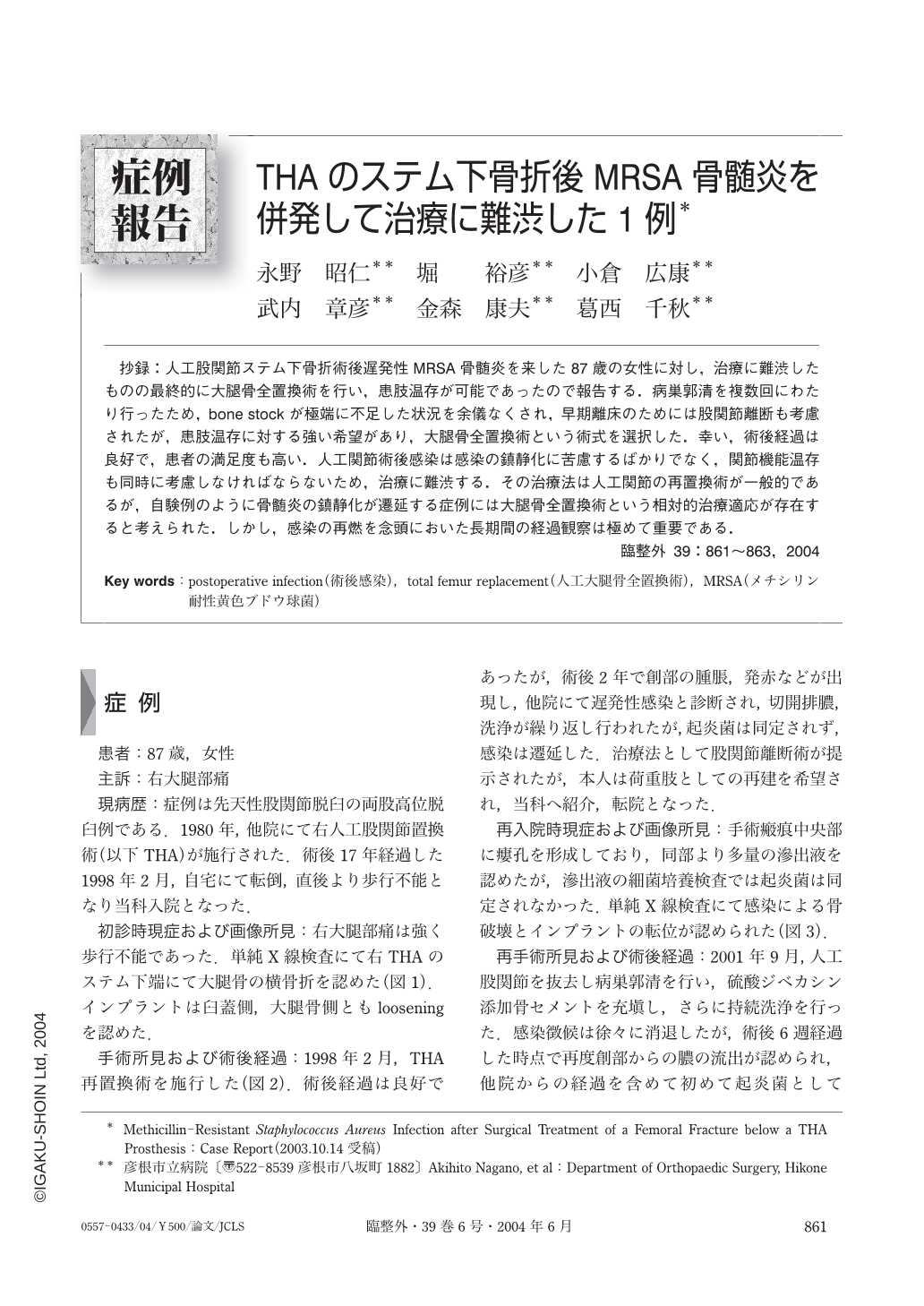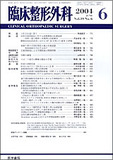Japanese
English
- 有料閲覧
- Abstract 文献概要
- 1ページ目 Look Inside
抄録:人工股関節ステム下骨折術後遅発性MRSA骨髄炎を来した87歳の女性に対し,治療に難渋したものの最終的に大腿骨全置換術を行い,患肢温存が可能であったので報告する.病巣郭清を複数回にわたり行ったため,bone stockが極端に不足した状況を余儀なくされ,早期離床のためには股関節離断も考慮されたが,患肢温存に対する強い希望があり,大腿骨全置換術という術式を選択した.幸い,術後経過は良好で,患者の満足度も高い.人工関節術後感染は感染の鎮静化に苦慮するばかりでなく,関節機能温存も同時に考慮しなければならないため,治療に難渋する.その治療法は人工関節の再置換術が一般的であるが,自験例のように骨髄炎の鎮静化が遷延する症例には大腿骨全置換術という相対的治療適応が存在すると考えられた.しかし,感染の再燃を念頭においた長期間の経過観察は極めて重要である.
We report the case of a 87-year-old woman who had previously undergone total hip arthroplasty (THA) and developed a methicillin-resistant Staphylococcus aureus (MRSA) infection after surgical treatment of a femoral fracture below the femoral prosthesis. Ultimately total femur replacement was performed, and the patient has made satisfactory progress.
Because of severe loss of bone substance and unacceptable leg-length discrepancy, disarticulation of the infected hip was initially suggested to the patient to prevent recurrence of the infection, but, it was refused. Total femur replacement can be considered in cases with severe loss of bone substance and long-term infection, but long-term follow-up is necessary.

Copyright © 2004, Igaku-Shoin Ltd. All rights reserved.


